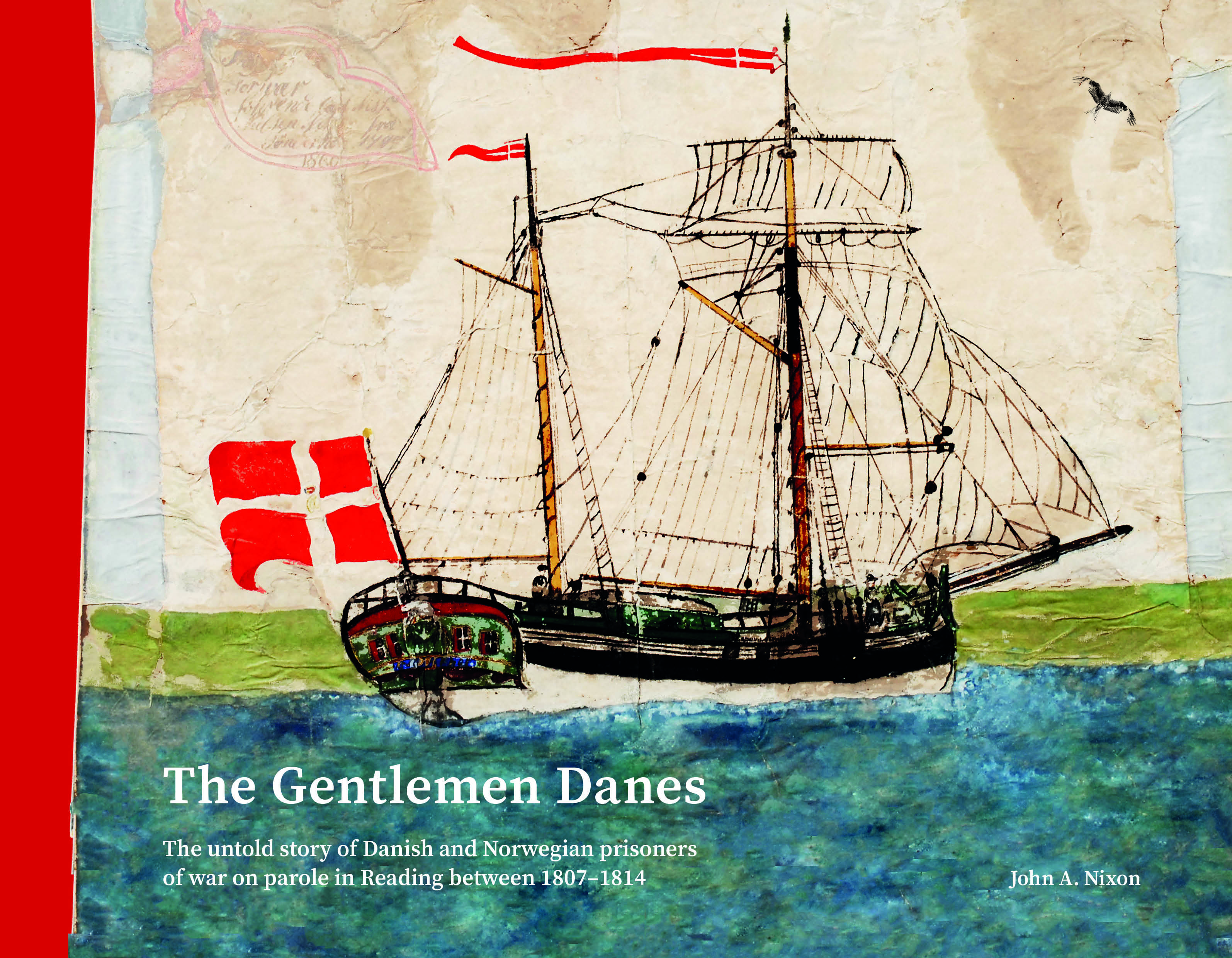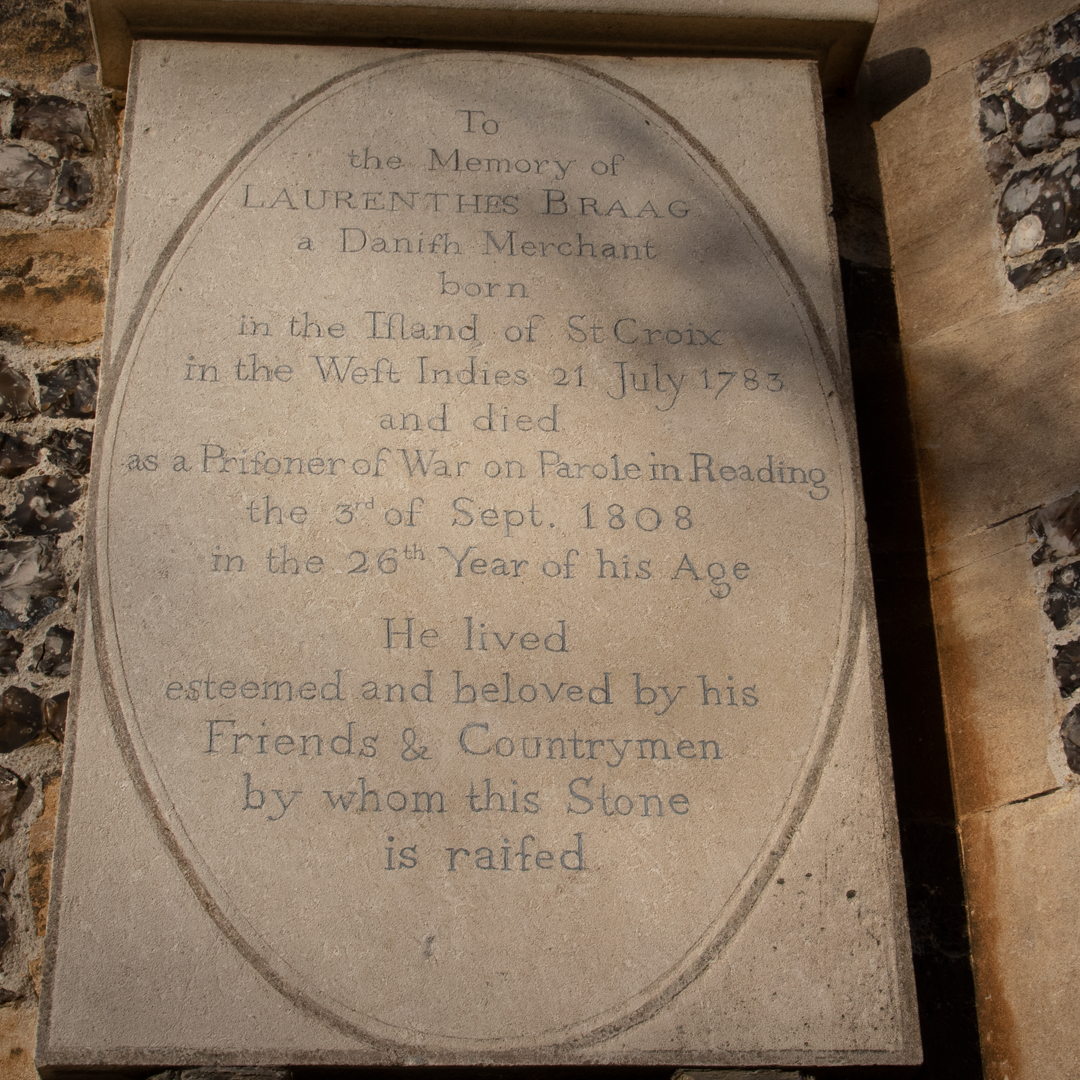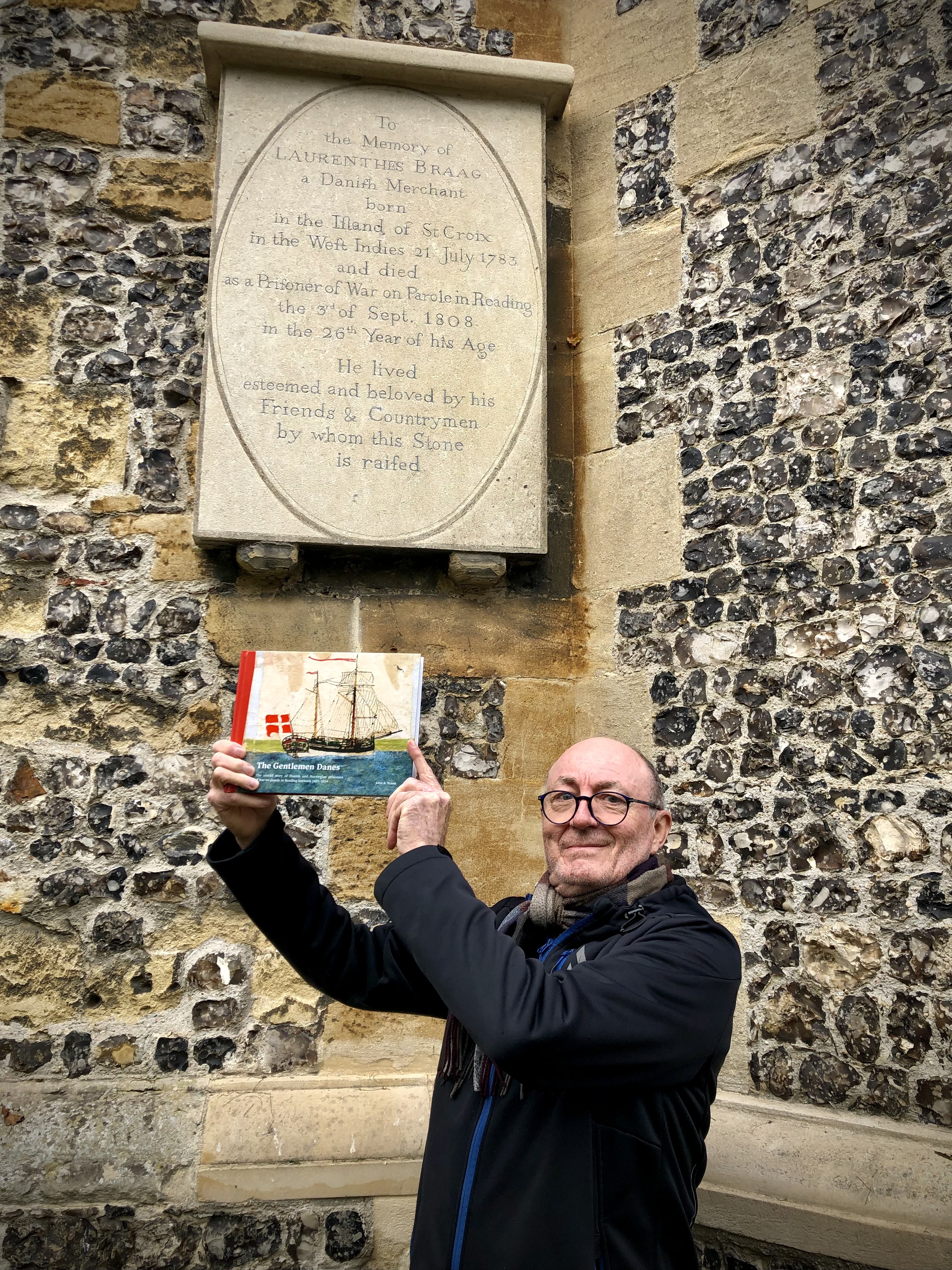Join local author John Nixon as he shares the research behind his new book, The Gentlemen Danes.
Every day, a good couple of thousand people must pass through the churchyard of St. Mary’s in central Reading.
One day, many years ago, whilst walking past the church myself, I stopped out of curiosity to read a badly-weathered plaque hanging on the wall. It commemorated the life of a 26-year-old Danish merchant, Laurenthes Braag, who died a prisoner of war ‘on parole’ in Reading in 1808.
This was the beginning of a journey that has taken me to libraries, museums and archives both here and abroad, in Denmark and Norway, that has finally culminated in the publishing of a book called The Gentlemen Danes, which shares its name with the affectionate term by which the Danish prisoners were known. It tells the story of the near 600 Danish and Norwegian prisoners of war who lived as free men in the Reading community ‘on parole’ from 1807 to 1814 at the latter end of the Napoleonic Wars.
Whilst Reading Gaol has been prominent in news stories in recent years, particularly in light of Bansky's 2021 artwork, much less is known locally about the lived led by these prisoners on parole. But what is striking about their story is that they were largely permitted to live as free citizens, doing many of the same things as ordinary townsfolk, all whilst the local people took them to their hearts.

The Napoleonic Wars in Reading
During the entire period of the Napoleonic Wars, which lasted from 1803 to 1815, Reading was one of fifty towns and villages across the country that housed parole prisoners who were taken during battles and conflicts against Napoleon's armies.
Most places in England held French military officers, but Reading was a rarity in that it held Danes and Norwegians (at that time a single country).
Before hostilities began, Denmark was a neutral country, and wanted to remain so. However, the nation was forced to side with one of the two belligerent powers: either Great Britain or revolutionary France. Denmark chose France, fearing a French invasion more than a British one. In this way the country became by default an enemy of Great Britain, leaving its considerable merchant fleet at risk of being captured as ‘prizes of war’.

It was this plaque that sparked John's research into the lives of Danish prisoners on parole in Reading.
As a result, it is estimated that around 1,400 Danish and Norwegian merchant ships were captured in the period of the conflicts as their crews became prisoners. For the ordinary seaman, this meant a miserable life of captivity aboard the dreaded prison hulks; filthy old ships anchored outside the naval ports of Chatham, Portsmouth and Plymouth. But for the privileged few—men considered to be ‘gentlemen’ skippers, first mates and military officers—life was a lot easier. These men, plus a number of ship's boys, were allowed to live in a parole town after signing a parole pass, containing a signed pledge that they would abide by certain conditions.

This model ship was likely made by Sivert Ryberg, a Danish prisoner-of-war. Ryberg presented a model warship to the Mayor of Reading on the day of George III’s Golden Jubilee, when the last of the Danish prisoners were given their freedom. REDMG : 1997.72
The life of Hans Birch Dahlerup
The Gentlemen Danes would have been nothing more than a discourse of historical facts had it not been for memoirs written by a young Danish naval officer (in later life, a baron and an admiral) named Hans Birch Dahlerup.
Dahlerup's writings bring the whole story to life. He was captured and sent to Reading a full three times between 1808 and 1814 becoming an Anglophile in the process. With wonderful powers of description, he shares with us many lively anecdotes of his life in Reading, and sketches so many interesting characters that it would be impossible to list them all here. For example, we learn that some of the prisoners formed a weekly dancing club with washerwomen’s daughters, and that they went out on long walks in the Berkshire countryside, way beyond the town’s limits, breaking the terms of their parole in the process but in the full knowledge that the local people would not report them for the considerable reward of One Guinea, which could end with them being sent to the prison ship. We also learn that some prisoners helped form a freemasonry lodge, and, probably most heartening of all, a number of prisoners fell in love with and married local girls, some even deciding to stay in Reading after the war was over.

John and his fantastic book share the spotlight with the plaque in St Mary's churchyard.
Order your copy of The Gentlemen Danes
The Gentlemen Danes is printed to the highest quality on sustainably sourced paper in hardback, landscape format allowing many of the around 100 pictures to be seen at their best. The book layout has been created by a fantastic couple of Typography and Design students at the University of Reading. The book can be purchased in the Reading Museum shop or at soaringkite.co.uk.





